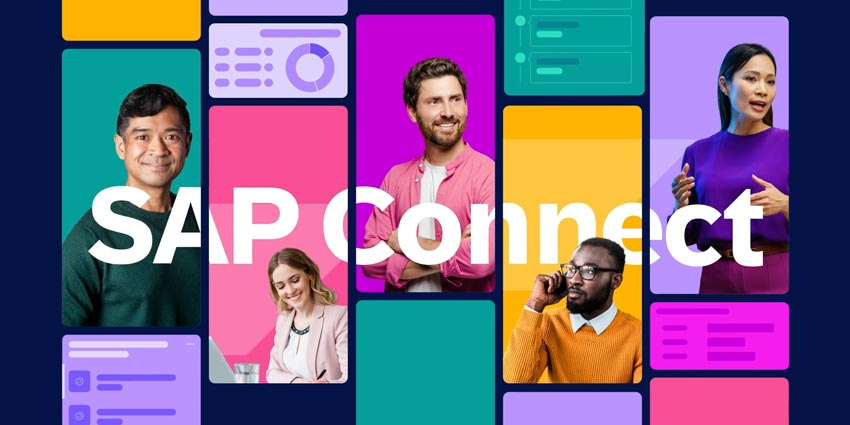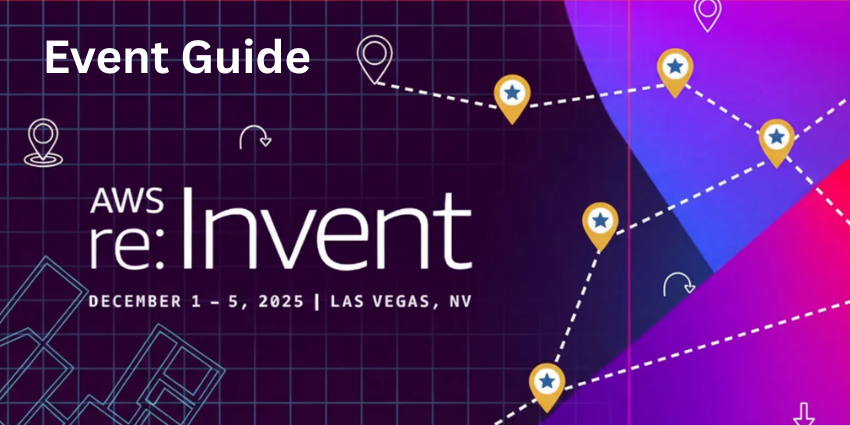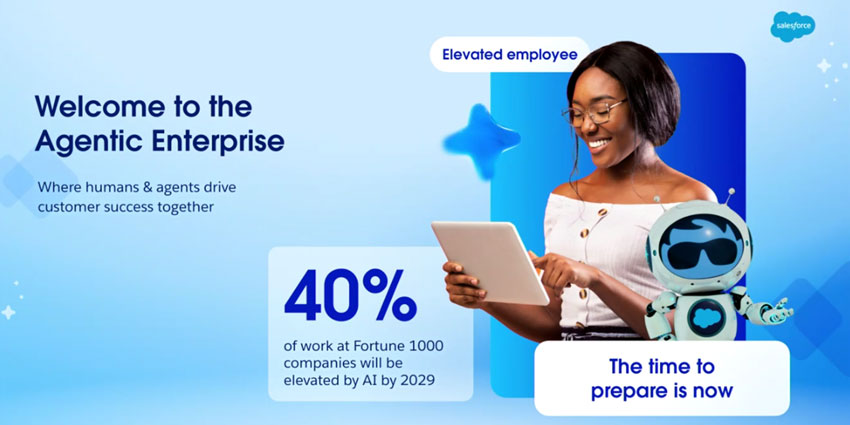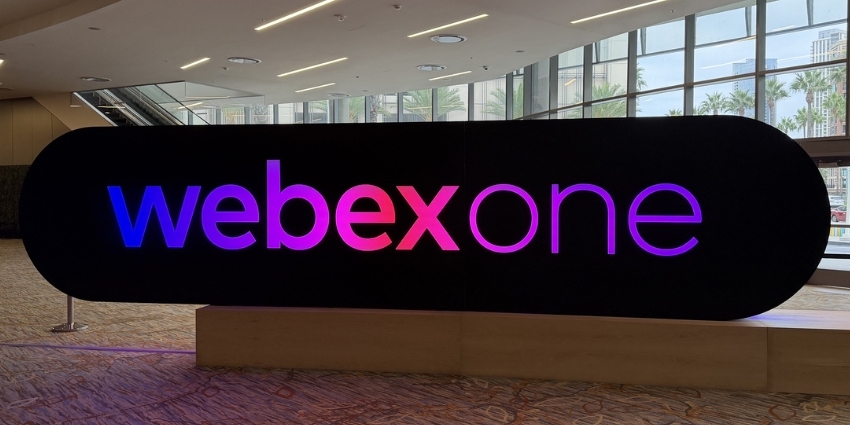SAP’s push into AI agents with Joule and its fast-tracked cloud migrations mean that one major conference a year no longer suffices.
In addition to the annual SAP Sapphire, it has rebranded and expanded its SuccessConnect event, so practitioners, partners, and execs can keep their finger on the pulse.
At this year’s event, that pulse raced, with many massive announcements including AI agent advancements, a new engagement platform, and much more.
Celebrating the event’s many headlines, Muhammad Alam, Member of the Executive Board of SAP SE, SAP Product & Engineering, said:
Our announcements today demonstrate the power of SAP Business Suite, where AI, data, and applications come together in an experience to propel smarter decisions, faster execution, and scalable transformation.
That suite envelops the enterprise, yet its customer experience portfolio is a key cornerstone.
Given that, here’s a rundown of the event’s biggest news, with extra emphasis on CX.
1. SAP Introduces “Role-Aware” AI Assistants
SAP has announced the next step in its Joule and AI agent journey: role-aware AI assistants.
These assistants partner with a person in a specific business role to support them in fulfilling tasks across the SAP Business Suite.
In doing so, they spot tasks the employee needs to accomplish and tap AI agents to get the job done, configuring, orchestrating, and managing them.
SAP also unveiled an array of new Joule Agents to support these Assistants in getting those role-specific tasks done.
For instance, it gave the example of a People Manager Assistant, which may evoke a People Intelligence Agent to isolate and solve compensation anomalies and similar issues.
Critically, the assistants complete tasks that cross various SAP systems, breaking down silos.
The company’s next move is likely to have them operate across SAP and third-party systems that customers often integrate with.
In the future, the Assistants in Joule may even perform new tasks based on specific brand goals and engage in self-reflection. After all, that’s the future for AI agent technology.
2. SAP Launches Business Data Cloud Connect
The SAP Business Data Cloud (BDC) Connect is the next big launch from the event. It links with third-party, partner platforms to “enable a bidirectional flow of business-ready data products”.
In other words, the tech giant will work with adjacent tech providers to build bridges from their platforms to the SAP Business Data Cloud, enabling better data sharing and cross-platform AI agent applications.
With zero-copy sharing, SAO ensures data stays securely in its systems, yet is accessible from other tech solutions, to preserve business context with copies.
Databricks and Google Cloud are the first big-name brands to partner on SAP BDC Connect. However, the tech giant promises that more will soon follow.
3. SAP Engagement Cloud Is the Big Customer Experience News
The big customer experience news from SAP Connect 2025 is the debut of the SAP Engagement Cloud, which the company describes as a “unified system of engagement”.
Aligned with the SAP Business Data Cloud, it aims to unify data from customer-facing departments and orchestrate communications that cross marketing, sales, and service.
While it’s likely to sit in the marketing department, who may use it to run cross-channel campaigns, service teams may – for example – use it to trigger proactive messages based on data signals that indicate the customer has an issue. They may even employ the platform’s native Joule Agents to turn these insights into such actions.
In this sense, SAP aims to unify departments with the SAP Engagement Cloud, helping them share technologies, align CX initiatives, and think further beyond their functional domain.
Brands can now register to participate in a limited beta and get early access to the solution, which will become generally available in 2026.
4. SAP Customer Loyalty Management Expands Its CX Portfolio
SAP Customer Loyalty Management is another significant addition to the SAP CX portfolio, targeting retailers and consumer packaged goods (CPG) companies.
Teased in June, the solution centers on a “loyalty profile”, which empowers end-customers with a place to track rewards, view entitlements, and redeem personalized offers.
Businesses may run analytics initiatives across these profiles, with embedded metrics that allow them to track the performance of loyalty promotions, programs, and activities.
They may also create new loyalty initiatives on the platform, share gifts with customers across channels, and develop shared loyalty programs with partners.
Now, SAP does already offer a loyalty management solution: Emarsys Loyalty. Yet, by spinning up a new solution, SAP makes its capabilities more accessible to brands that don’t want all the bells and whistles of a full-scale customer experience platform.
The solution is set to reach general availability next month.
5. Another New Solution: SAP Supply Chain Orchestration
Before getting into the other major CX announcements, SAP notably announced yet another solution: SAP Supply Chain Orchestration.
With embedded Joule agents, working with a live knowledge graph, it detects real-time risks to supply chains and orchestrates an appropriate, coordinated response, with prioritized actions.
The solution takes data from SAP Business Network and the SAP Business Data Cloud to monitor “every tier of the supply chain”.
Indeed, it links closely to SAP Business Network to contextualize detected risks and notify the relevant parties – across planning, procurement, logistics, and manufacturing – which may be impacted.
Interestingly, Supply Chain Orchestration may also boost customer experience, helping increase visibility into stock and when goods may become available.
SAP expects the solution to become generally available in the first half of next year.
6. New Joule Agents for Service, Sales, and Commerce Teams
SAP has unleashed many new Joule agents across its portfolio. However, three of the most notable impact service and sales teams.
First is the Digital Service Agent. It offers conversational customer service across digital channels, business portals, and e-commerce platforms. It interacts by leveraging customer conversation context, history, and knowledge base data without needing to pre-configure intents.
Interestingly, it integrates with SAP workflows, which stretch beyond the front-office and into back- and middle-office SAP systems for more expansive resolution flows. That’s its differentiation.
For sales, a new Quote Creation Agent transforms email quote requests into “ready-to-send” quotes and orders, which sales and order management teams can review, edit, and pass on.
Finally, a Catalog Optimization Agent updates and optimizes product data to enhance the “accuracy and agility” of merchandising.
Other new Joule agents span finance, spend management, and HR.
7. SAP Unveils a Customer Self-Service Agent for Utilities
Alongside the Digital Service Agent, SAP has announced a Utilities Customer Self-Service Agent.
The solution integrates directly with SAP Cloud ERP Private solutions, so it utilizes data not only in a CRM or CDP, but broader customer context. That may include contract, tariff, product details, consumption data, etc.
Moreover, the Utilities Customer Self-Service Agent, which comes part-and-parcel with SAP for Utilities solutions, hopes to address specific industry pain points, including market regulations, prosumers, and beyond.
The Agent acts like a Joule agent – so can shift between systems – will reach general availability later this quarter.
8. SAP Integrates Its CX Portfolio with WalkMe
SAP proved ahead of the observability trend when it acquired WalkMe for $1.5MN last year.
The solution overlays an enterprise’s tech stack and offers visibility into how applications are performing and the workflows that run between them.
In doing so, it surfaces inefficiencies, suggests fixes, and recommends where businesses can build better workflows. On this last point, it may also spotlight opportunities for AI agent deployments.
Since the acquisition, SAP has integrated WalkMe with its broad suite. Its latest move is integrating it with SAP CX, allowing customer-facing teams to leverage the solution without IT involvement and disrupting current business flows.
Ultimately, SAP hopes to provide its CX customers with more guidance on using its solutions more effectively and automating new processes.
As such, they may recognize new opportunities to better automate support requests, accelerate onboarding, boost data accuracy, and more.
The integration will be generally available this quarter, and businesses can leverage an embedded version for free. However, a full, customizable WalkMe Premium solution will come at a cost.
9. SAP Jumps on the Revenue Intelligence Bandwagon
Many analytics platforms, like Gong, have shifted to become revenue intelligence solutions, emphasizing their capability to help decipher what drives a business’s revenue.
SAP has embraced this shift, announcing a Revenue Intelligence application in SAP Business Data Cloud, so that sales teams can better understand their sales pipeline and customer health. That comes not only in the form of static insight but also recommendations that help manage deal risk, accelerate the deal cycle, and uncover new opportunities.
This underscores a much more significant shift in business reporting. Analytics tools no longer surfacing insight; they’re prescribing actions on the back of those data points.
10. Meet the New-Look SAP Ariba
To finish, let’s step back from CX and consider SAP Ariba. It has a long history, dating back to the 1990s, yet SAP is rolling out the next generation of Ariba solutions for source-to-pay.
These solutions include many new capabilities, such as a simplified user interface with a central SAP Ariba launchpad that provides clear navigation, surfaces to-do items, and spotlights insight.
There are also new AI tools to assist users with tasks like reviewing contracts, analyzing bids, and generating supplier summaries.
Additionally, SAP Ariba now includes automated sourcing, enhanced 360-degree supplier profiles, and a new central intake management feature.
However, perhaps the most significant move is that SAP Ariba now sits on the SAP Business Technology Platform, enabling simpler integrations with SAP apps and third-party ERP systems.
What Else Did SAP Announce?
Onlookers outside the customer experience space may have added several other announcements to their top ten list.
For instance, there is a new skills-based hiring feature for SAP Fieldglass and a SAP Signavio Process Transformation Manager. That’s alongside all the other Joule agents and capabilities shared in the new SAP Cloud ERP Private release.
To learn more about all these, head over to the SAP website. However, for more on SAP’s CX journey and ambitions, check out our article: SAP Is Building a “Modern and Composable” Customer Experience Suite







